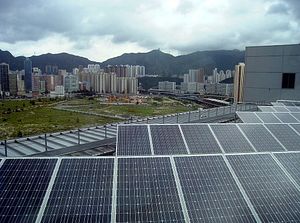China has emerged as a leading provider of finance for infrastructure development projects in low and middle income countries globally. Most of China’s overseas development finance is increasingly routed under its flagship foreign policy strategy, the Belt and Road Initiative (BRI). The international assets of China’s two policy banks, the China Development Bank (CDB) and China Exim Bank (CHEXIM), now rival or exceed those of Western-backed multilateral development banks (such as the World Bank).
The Chinese pre-eminence in global development finance is best exemplified by its financing in the energy sector, where its offshore lending to national governments between 2007 and 2016 was on par with those of the top four Western-backed multilateral development banks (i.e. the World Bank, Asian Development Bank, African Development Bank and Inter-American Development Bank) put together, as per Boston University’s database on China’s global energy finance. Also, according to the World Bank, energy and power projects make up more than 46 percent of the $575 billion hitherto invested in BRI.
Unsurprisingly, China’s energy investments are skewed toward fossil fuels; projects involving coal, oil and natural gas have comprised roughly 60 percent of the energy portfolio of China’s two policy banks, according to a World Resources Institute study. Another estimate shows, as of the end of 2016, there were 240 Chinese-funded coal-fired power projects in 25 countries along the Belt and Road.
As the global economy is confronted with the inescapable realities of a warming planet, financial institutions with significant fossil fuel exposure face a gamut of “physical” and “transition” risks, ranging from loan defaults resulting from climate shocks to assets being rendered “stranded” in an increasingly carbon-constrained world. Plus, there is the risk of public opposition, which is jeopardizing coal investments across the globe. Lamu coal-fired power plant, a key BRI project in Kenya, for instance, was halted by a court ruling amid protests from anti-coal activists and after the Industrial and Commercial Bank of China (ICBC) (one of the “Big Four” state-owned commercial banks) failed to heed three years of petitioning from local land defenders.
It is instances like these that have made China’s state-owned commercial banks more cognizant of the risks of fossil fuel investments than their policy-oriented counterparts. It is no surprise then that China’s policy banks (which are meant to further the Chinese government’s policy mandate) have greater exposure to fossil fuels than do China’s Big Four state-owned commercial banks. Their inordinate exposure to fossil fuels coupled with the sheer quantum of their overseas investments puts Chinese policy banks in a precarious position. The fact that the Chinese banking sector is reeling under the burden of bad debt does not help. It is therefore of essence that China’s policy banks re-evaluate the bankability of their fossil fuel projects, not just for their own survival but also that of the planet.
Divya Narain is a doctoral candidate at The University of Queensland, studying the environmental risks and safeguards within China’s Belt and Road Initiative (BRI). Divya graduated with a Master’s in Biodiversity Conservation from the University of Oxford and was later a visiting fellow at the University.

































